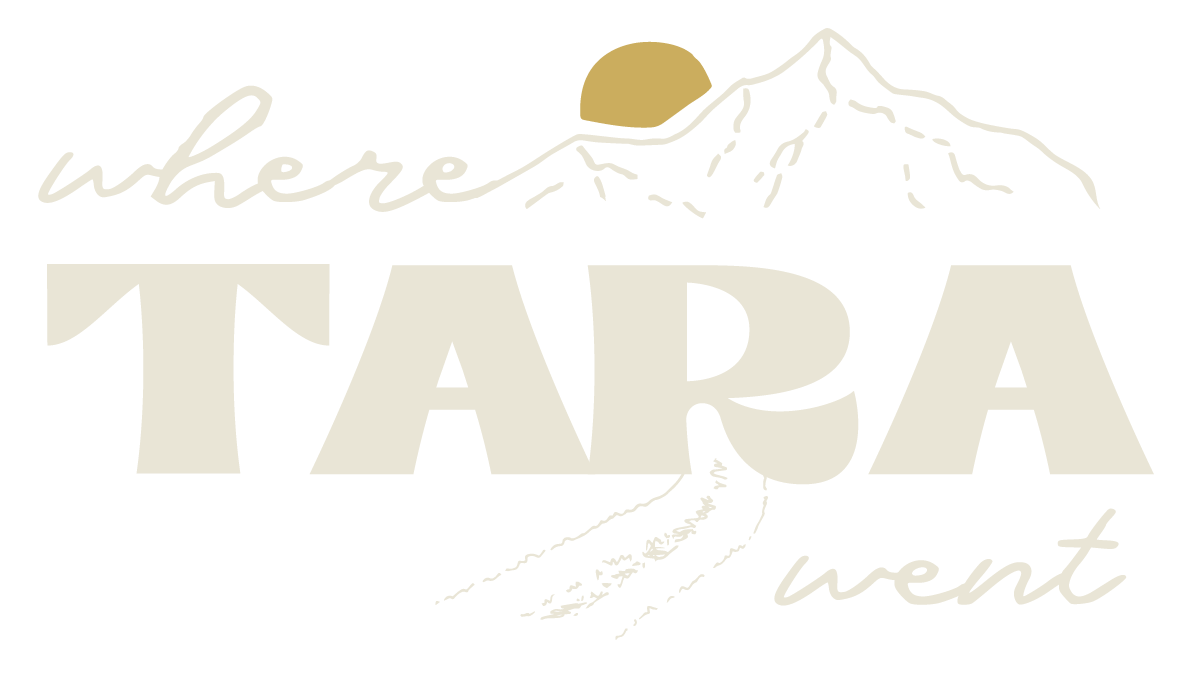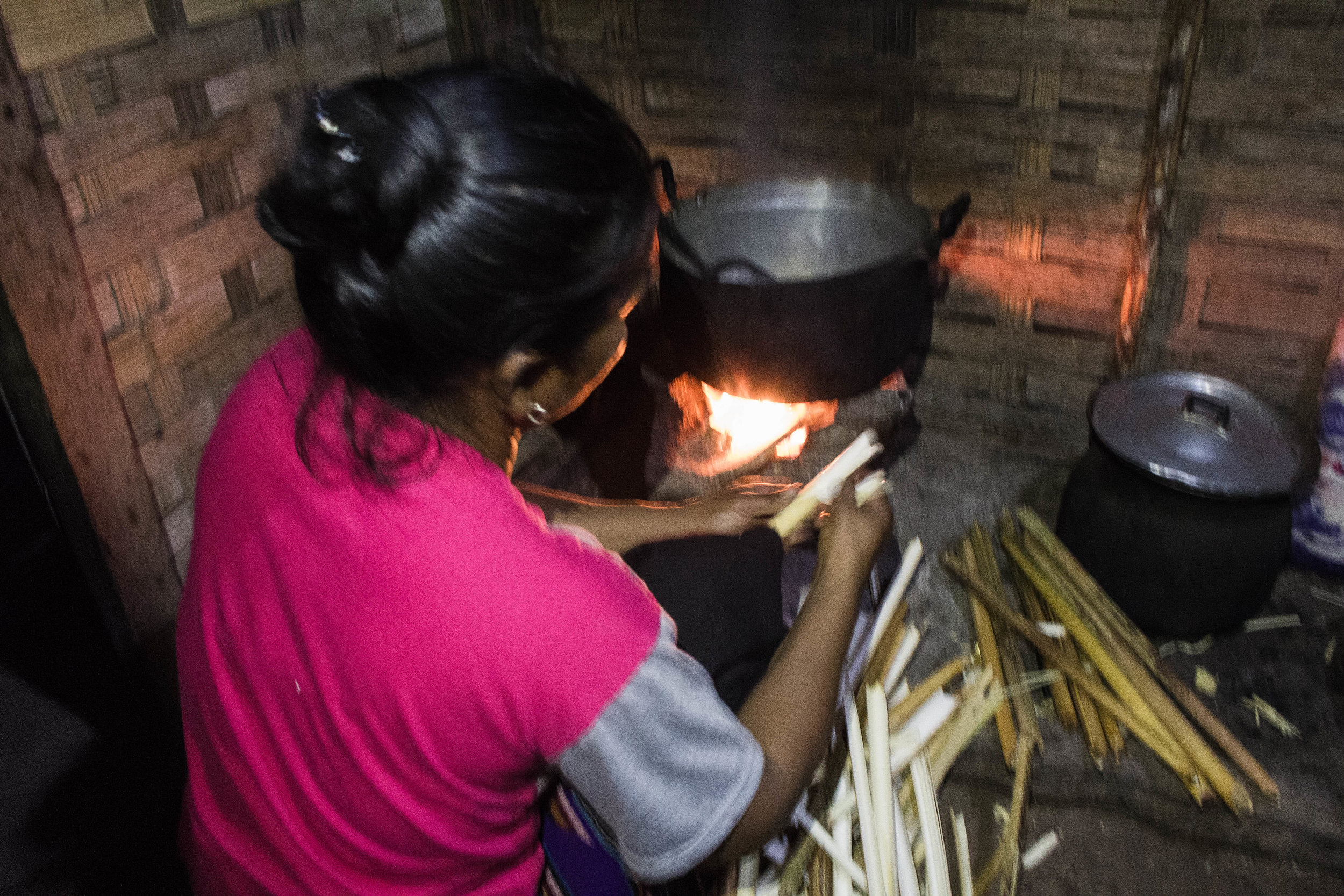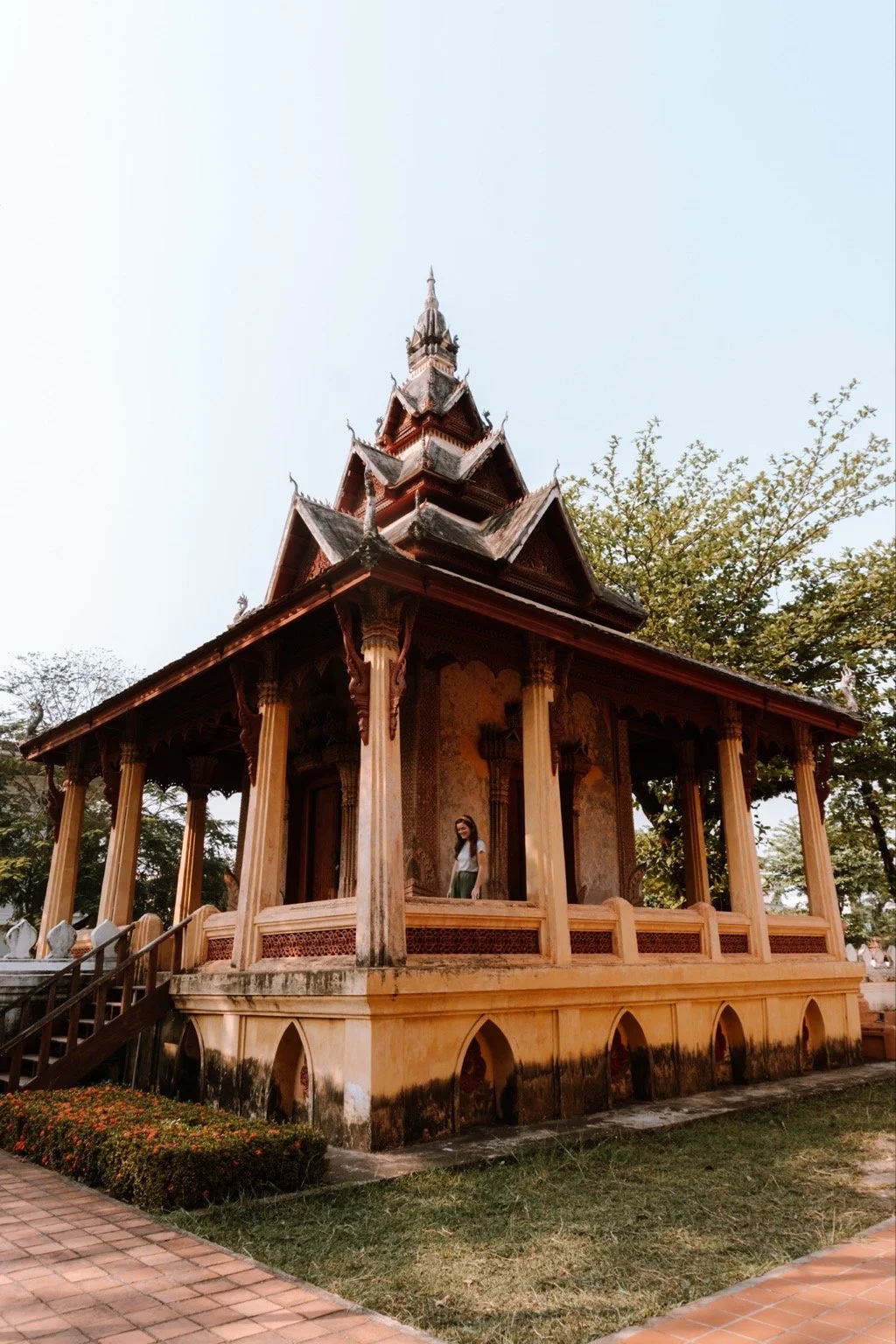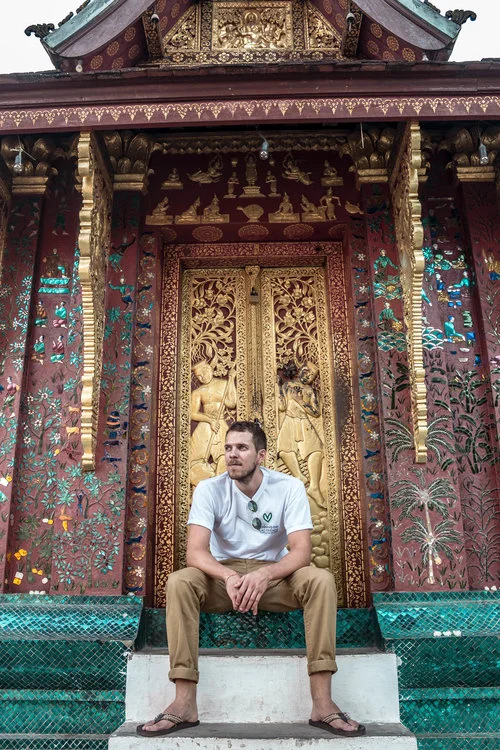how to plan a multi-day trek in Luang Namtha, Laos
Luang Namtha Province in northwest Laos is filled with natural landscapes and cultural diversity, making it an ideal place for ecotourism. Especially since it is home to the Nam Ha Biodiversity Conservation Area and various outdoor tourism initiatives.
Admittedly, living in New Zealand and Montana has made me spoiled when it comes to great treks. While Laos may not have the same quality of trail conditions or be renowned for its hiking {yet}, trekking in Luang Namtha is a true jungle adventure for those seeking off-the-beaten-path hikes in a region filled with fantastic natural beauty.
about the nam ha national biodiversity conservation area
Officially deemed a biodiversity conservation area in 1993, Nam Ha NBCA includes 222,400 hectares of protected land. Ecotourists started visiting Nam Ha in the early 2000s, but it is still a primarily untouched part of Laos with much fewer visitors than destinations like Luang Prabang.
ecotourism supporting ethnic minorities
Ecotourism in this area of Laos is especially important to the economic welfare of the local communities. Ethnic minority tribes live in the Nam Ha area, and they depend on trekkers passing through as part of their livelihood. The homestay accommodation minority communities provide to those on multi-day treks provide a large majority of their income, as well as help bring awareness to the many ethnic minorities that exist in Laos.
environmental threats to nam ha BCA
Unfortunately, even though Nam Ha is a protected area, it faces many environmental threats. The slash and burn techniques used in traditional farming throughout Laos poses a major threat in the area. Exporting timber, and thus harvesting it, is also a major concern to the ecosystems and wildlife in the area. The hope is that an increase in ecotourism here will give the people of Laos a bigger incentive to protect it— economic development.
how + where to book an eco-adventure
So, now that you’re convinced ecotourism in Nam Ha NBCA is worth fitting into your travel itinerary, you’ll need to book a trek with one of the regulated tour agencies in town. I did a multi-day combo kayaking/trekking tour with Discovering Laos and cannot speak highly enough about them. There are many companies to book your trek through. The most highly-praised and most commonly booked companies {besides Discovering Laos} are The Hiker and Green Discovery. You can book or submit an inquiry through each company’s website.
I’ve pinned the most highly-rated trekking companies in Luang Namtha on the map!
trekking excursion options
The most popular option for tourists is to spend 2 days and 1 night trekking and/or kayaking in Nam Ha NBCA, which is exactly what my group did. You can spend as long as 8 days trekking through the Nam Ha NBCA, but most tour companies don’t advertise the longer options. If you are interested in this kind of elongated stay in the jungle, contact one of the tour companies in the area {or go directly to Luang Namtha Tourism} and they will happily create a custom tour tailored to your adventure preferences.
pricing
Treks are super reasonably priced, starting at just USD $26 per person for a group trek. Private treks start at USD $117. The price of your trek will depend on how many days you want to hike, if you want a combination tour {i.e. trekking one day and kayaking the next}, and how many people are in your group {if you have one}. The price of your trek will include:
vehicle transport to the start of the trek
lunch {served + prepared in the jungle}
drinking water
National Park fees
government taxes
two knowledgeable, English-speaking guides- one will be from a local minority village
what to bring on your trek
Now that you’ve booked your trek and know a little more about the area, you need to pack properly. Being in rural Laos means no last minute shopping for things you might have forgotten!
Here’s a list of the most important items to bring with you:
an adventurous attitude
lightweight hiking boots
sun hat
sunscreen
sunglasses
bug spray/ insect repellant
rain jacket {if trekking during the wet season}
tissues {there are no bathrooms along the hike from the start point to Na Lan Village, so you’ll have to do your business “jungle style”}
hand-sanitizer
If you are staying overnight on a multi-day adventure add these items to the list above:
chemical-free soap
chemical-free shampoo bar
ear plugs
torch/flashlight
change of clothes
deciding when to trek
From late June until early September, Laos experiences their rainy season. From late September to early June, the dry season sets in. The trail conditions you experience will vary depending on the season you choose to go trekking.
PROS OF TREKKING DURING DRY SEASON | The canopy treetop coverage makes nearly the entire trail shaded from the intense sunshine, so heat isn’t too bad for a majority of the hike. If you sleep at a village homestay, which is part of a multi-day trek, fewer tourists will make the place feel more “off-the-beaten-track”.
CONS OF TREKKING DURING DRY SEASON | Dry season makes the trail dusty and loose in certain areas. Slash and burn techniques used by local farmers can occasionally create a less than desirable “smog” in the air. If you take a route without canopy coverage, it will be super hot.
PROS OF TREKKING DURING WET SEASON | The temperatures are milder during wet season and the air quality is particularly good.
CONS OF TREKKING DURING WET SEASON | While I didn’t do my trek through Nam Ha NBCA during the wet season, I’ve heard enough from the local trekking guides to know that this isn’t ideal for beginners. The heavy rain turn the trails to mud, which can make them slippery and extra rugged. Leeches are also a problem during the wet season.
NOW THAT YOU HAVE ALL THE INFORMATION, HERE’s my personal EXPERIENCE
Isabel, Nam, Karla, and I were picked up from Zuela Guesthouse and taken by a tuk-tuk to the Luang Namtha Tourism office to drop off the bags we wouldn’t be bringing with us on the trek. We did the popular 2 day/1 night trekking and kayaking adventure combo, so we brought only what we absolutely needed in our daypacks.
The tuk-tuk then brought us to the start of the trek, where we began our walk through the jungle at 9:30 AM. The first three-ish hours of our trek were consistently uphill, but didn’t require a terribly high level of fitness. As a matter of fact, the 2-day/1-night trekking option beginning at Nam Ha village was relatively easy the whole way through. The entire trail is a series of uphills and downhills, but you don’t have to be an avid hiker.
By 11:44 A.M., our group reached a small clearing in the jungle where our guides prepared a delicious lunch over a fire. As a vegetarian, I always wonder what I’ll get for food on group tours, but I was thrilled when I was served rattan and banana flower soup, sticky rice, khaiphaen {dried Lao river weed with sesame seeds}, and jeow {a chili paste for dipping}. There was also morning glory, pumpkin, eggplant, and sausage {for the carnivores of the group}.
After eating our lunch, we got back on our feet. The trail from our lunch spot became cooler as we made our way towards the Nam Ha River. As we got closer to the river, the trail became a series of slight uphills followed by narrow downhill paths. This part of the trail was more difficult to hike because it required some careful footing. The final 30 minutes of our hike were flat through rice fields.
We arrived at Na Lan village at 4:30 PM, getting to fully enjoy golden hour, which, in Laos, is extra golden. It’s as if the country doesn’t care about impressing anyone at any time until the last few hours of the day and then WHAM! All the beauty and magic.
Na Lan is a Khmu village with no electricity. The villagers have solar panels for the very few lightbulbs that hang strategically throughout it. Make sure your devices are fully charged and bring a portable power bank with you if you need. Na Lan has a primary school that is serviced by the World Food Program, meaning all children who attend are provided free lunch. It made me really happy to know that the young ones of this village have the opportunity to get an education and don’t go hungry at school, like so many children do globally.
Since our group did the popular multi-day tour, we stayed overnight at Sambayler Homestay {“sambayler” is Khmu for “welcome”}. Our bamboo home had three rooms, mosquito nets, and cushion mattresses on the floor. Us ladies doubled up in the first two rooms, while our guides made home for the night in the third room. The bathroom was outside of the home and, as previously mentioned, there are no lights to make finding it easy in the middle of the night. Bring a torch or you’ll have to do what I did and light the way with your phone. The toilets did have toilet paper, but I would suggest bringing your own anyway.
After a long day in the hot sun and on dusty trails, we desperately wanted showers. I knew there is only one way to get clean in rural Laos- a “sinh shower.” A sinh is a traditional skirt that women throughout the country wear. However, in rural areas, women have a showering sinh to wear in the river while they clean themselves. We each borrowed one from our homestay owner and headed to the river. For those who haven’t tried this before, tie your sinh in a knot and avoid going too far into the water. The deeper you go, the higher your sinh will rise, and you don’t want to cause a controversy by flashing everyone.
ECO-TIP: Remember you are bathing in natural water, so what you put into it will affect the ecosystems in the area. Bring chemical free soap and use a shampoo bar like I did if you can. Lush + Ethnique are my favourites!
Post-shower and dinner, which was cooked over a fire in a small kitchen lit with a single lightbulb, we were brought to the main gathering area of the village where the children performed Khmu dances. The children from the village wore traditional Khmu attire and performed five dances. Lao beong, a dance between partners, was the “grand finale” and we were asked to be the performers’ partners. It was such a fun, local experience to have with a community far away from the main tourist trail.
The next morning we woke up to a delicious breakfast and prepared ourselves for the next adventure on our 2-day journey— kayaking down the Nam Ha River. But I’ll save that for another post!
final thoughts
I didn’t know what to expect when I signed up to trek in northern Laos. Most of the hiking I’ve done in Laos has not met my expectations in any way, especially when {unfairly} compared to New Zealand or Montana. However {and it is a large however}, Hiking through Nam Ha, reminded me how highly underrated Laos is as an ecotourism destination and how beautiful this little country is. The guides and locals who helped facilitate our trek and homestay experiences prove that Laos has some of the most generous and hospitable people I’ve ever met. I can’t believe I didn’t head to Nam Ha sooner, and I fully regret waiting until I was invited to go. The scenery was stunning and the community-based experience really touched my heart. If you love nature, local experiences, and getting rugged, then I encourage you to book a trek in northern Laos.
Disclaimer: I was a guest, hosted by the Luang Namtha Tourism Board. As always, all opinions are my own and my experience is expressed authentically.
















































